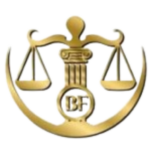Why is there so much discrimination in Ontario
Discrimination in Ontario is a complex issue that can be attributed to various factors. One reason for the prevalence of discrimination is the diversity of the population. Ontario is home to people from various cultural, ethnic, and religious backgrounds, which can lead to misunderstandings and biases. Additionally, systemic barriers and inequality in access to opportunities can contribute to discrimination. Discrimination can manifest in different forms, such as racism, sexism, ageism, and ableism. It is important to address these issues and promote inclusion and equality to reduce discrimination in Ontario.
Understanding Human Rights
Human rights are the basic rights and freedoms to which all individuals are entitled, regardless of their nationality, race, gender, or other characteristics. These rights are inherent to every human being and are protected by law. Understanding human rights entails recognizing the inherent dignity and worth of every person and ensuring that their rights are respected, protected, and fulfilled. Human rights include civil and political rights, such as the right to life, liberty, and security of person, as well as economic, social, and cultural rights, such as the right to education, healthcare, and adequate standard of living.
Implementation of Human Rights Law
The implementation of Human Rights Law involves translating legal principles into practical actions and policies that ensure the protection and promotion of human rights. This process includes the adoption of legislation and policies that are in line with international human rights standards, the establishment of mechanisms for monitoring and enforcing human rights, and the provision of remedies for individuals whose rights have been violated. Implementation also requires raising awareness about human rights and educating the public about their rights and responsibilities. Effective implementation of human rights law is crucial for creating a just and inclusive society.
Challenges and Controversies
The field of human rights law faces various challenges and controversies. One challenge is the enforcement of human rights in practice, as many violations go unreported or unpunished. There are also disagreements and debates about the scope and interpretation of certain rights, such as the balance between individual rights and collective interests. Controversies may arise about cultural relativism, where different cultures have different understandings of human rights. Additionally, there are challenges in addressing new and emerging human rights issues, such as the impact of technology on privacy rights. Overcoming these challenges and resolving controversies is essential for the effective protection and promotion of human rights.
Future of Human Rights Law Protection
The future of human rights protection is a topic of ongoing discussion and debate. As societies evolve and face new challenges, the protection of human rights must also adapt. This includes addressing emerging issues such as climate change, artificial intelligence, and the protection of digital rights. The future of human rights protection also depends on the commitment of governments, civil society organizations, and individuals to uphold and promote human rights. By fostering a culture of respect for human rights and taking proactive measures to address violations, we can strive for a future where human rights are universally respected and protected.
The core principles of Human rights legislation include:

- Universality: Human rights apply to all individuals, without discrimination, and are applicable everywhere, regardless of national borders.
- Inalienability: Human rights are inherent to all human beings and cannot be taken away or transferred.
- Equality and Non-Discrimination: All individuals are entitled to equal rights and protections under the law, without discrimination based on characteristics.
- Human Dignity: Human rights law recognizes and upholds the inherent dignity and worth of every person.
- Accountability and Remedies: States and other actors are responsible for respecting, protecting, and fulfilling human rights, and mechanisms exist to hold them accountable for violations and provide remedies to victims.
Ontario Human Rights Tribunal
The Ontario Human Rights Tribunal is a specialized administrative tribunal that adjudicates human rights disputes in Ontario. It is an independent body that operates under the Ontario Human Rights Code. The tribunal has the authority to hear and decide cases related to discrimination and harassment based on various grounds. The tribunal plays a crucial role in upholding human rights and ensuring that individuals have a forum to seek justice and protection against discrimination.
Human Rights Code
The Human Rights Code is a provincial legislation in Ontario that protects individuals from discrimination and harassment based on various grounds. It sets out the rights and responsibilities of individuals and organizations about human rights. The Human Rights Code prohibits discrimination and harassment in areas such as employment, housing, services, and contracts. It also establishes the Ontario Human Rights Tribunal as the adjudicative body for human rights disputes. The Human Rights Code plays a crucial role in promoting equality, preventing discrimination, and providing remedies for individuals whose rights have been violated.
The grounds for discrimination are:
1. Race: Person’s, skin color, ethnic origin, and nationality.
2. Ancestry: Family or cultural background, including their ancestors’ place of origin.
3. Place of Origin: Country of birth or the country where their ancestors originated.
4. Color: Refers to a person’s skin color or complexion.
5. Ethnic Origin: Ethnic background, culture, language, or customs.
6. Citizenship: Legal status as a citizen or non-citizen of a country.
7. Creed (Religion): Religious beliefs, practices, or observances.
8. Sex (including pregnancy, gender identity): Person’s sex, gender identity, gender expression, and pregnancy.
9. Sexual Orientation: A person’s sexual orientation, such as heterosexual, homosexual, or bisexual.
10. Age: Includes a person’s age, whether they are young or old.
11. Marital Status: Marital status, whether they are single, married, divorced, separated, or widowed.
12. Family Status: This includes a person’s family status, such as being a parent, or caregiver, or having other family responsibilities.
13. Disability: A person’s physical or mental disability, whether visible or invisible, temporary or permanent.
14. Receipt of Public Assistance (in housing only): Receipt of public assistance, such as social assistance or disability benefits, in the context of housing.
15. Record of Offences (in employment)
These grounds are protected under the Ontario Human Rights Code to ensure that all individuals are treated with dignity and respect, and to prevent discrimination and harassment based on these characteristics.
Famous quotes:
“Injustice anywhere is a threat to justice everywhere. We are caught in an inescapable network of mutuality, tied in a single garment of destiny. Whatever affects one directly, affects all indirectly.”–Martin Luther King
“Love him and let him love you. Do you think anything else under heaven really matters?” – James Baldwin
Request A Quote


